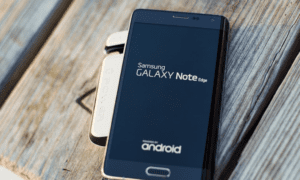For many drivers, a car is more than transportation; it’s an extension of their identity. Personalizing a vehicle taps into both engineering and design disciplines, combining technical upgrades with stylistic changes to create something uniquely yours. It’s a delicate balancing act: changes must respect the mechanical realities of the vehicle while expressing individuality in a way that feels authentic.
Understanding the Foundation: Respect the Machine
Before making any changes, it’s critical to understand your car’s foundation. Every vehicle is engineered with a specific balance of power, weight, handling, and safety. Personalization should work with these characteristics, not against them.
Start with basic questions:
- What is the car’s intended purpose (commuting, track days, show car)?
- Where does it excel stock, and where could it improve?
- What aspects of its character do you want to enhance or transform?
A strong understanding of the platform ensures that modifications feel natural and don’t introduce reliability or drivability problems.
Engineering Enhancements: Modifying the Core
Performance upgrades are about refining or reimagining the mechanical aspects of the vehicle. But they require respect for the interconnected nature of automotive systems.
- Powertrain: ECU tuning, intake and exhaust modifications, forced induction, and engine swaps can elevate performance. But supporting upgrades like cooling, fueling, and drivetrain reinforcements must accompany serious power gains.
- Suspension and Handling: Coilovers, upgraded bushings, sway bars, and strut braces tighten up handling and enhance feel without making a car uncomfortable for daily use.
- Braking Systems: Improved pads, rotors, and brake lines not only boost performance but add security and confidence.
- Tires and Wheels: The right set of tires improves almost every dynamic aspect of a vehicle. Wheel choices impact unsprung weight, aesthetics, and fitment.
Engineering-led modifications should enhance capability without sacrificing reliability or usability. Personalization isn’t just about “more” — it’s about “better.” Smart performance upgrades deliver tangible improvements every time you drive.
Cold Air Intake: Breathing New Life Into Your Engine
One of the most straightforward yet effective upgrades for personalizing performance is installing a cold air intake. By drawing cooler, denser air into the engine, a cold air intake can enhance combustion efficiency, leading to sharper throttle response and a slight horsepower boost. It’s a modification that supports both performance aspirations and the emotional thrill of hearing your engine breathe more freely.
Design Tweaks: Expressing Personality
Once the mechanicals are sorted, design modifications take center stage. These changes reflect personal taste and create an emotional bond between driver and car.
- Paint and Wraps: Full resprays or vinyl wraps change a vehicle’s character dramatically. Matte, gloss, metallic, or even color-shifting finishes personalize appearance without affecting performance.
- Body Kits and Aero: Subtle lip kits, spoilers, and diffusers can enhance aesthetics and — if well-designed — even improve aerodynamics.
- Lighting Upgrades: LED and projector headlights, custom taillights, and ambient interior lighting sharpen looks and usability.
- Interior Refinement: Custom upholstery, upgraded steering wheels, unique shift knobs, and personalized trim elevate the cabin experience.
Good design upgrades show restraint. Overly flashy mods often age poorly, while tasteful choices stay attractive for years.
Forgiato Rims: Fusing Style and Functionality
For enthusiasts looking to personalize their ride visually and dynamically, Forgiato rims are a standout choice. These premium wheels combine lightweight performance benefits with aggressive, head-turning designs. Forgiato rims not only enhance acceleration and handling through reduced unsprung weight but also offer a luxurious touch that sets any build apart from the crowd.
Blending Engineering and Design: The Sweet Spot
The best personalized cars aren’t just mechanically impressive or visually stunning; they blend both seamlessly.
Take, for example, a set of lightweight forged wheels. They enhance acceleration, braking, and handling (engineering) while dramatically changing the car’s profile (design). A carbon fiber hood reduces weight and heat soak while adding an aggressive look. A tuned exhaust offers better flow for power gains while enriching the sound signature for emotional impact.
When engineering and design inform each other, the result is a cohesive build that feels intentional and complete.
Giovanna Wheels: Crafting a Signature Presence
Giovanna wheels present another compelling option for drivers focused on crafting a truly personalized vehicle. Known for their bold yet refined designs, Giovanna wheels provide an upscale appearance without sacrificing strength or performance. Their presence on a build signals careful attention to both visual storytelling and driving feel, ensuring your personalization efforts reflect a complete, thoughtful vision.
Common Pitfalls and How to Avoid Them
Personalization can go wrong when upgrades are made without a clear plan or when style sacrifices performance (or vice versa).
- Mismatched Mods: A track-focused coilover setup with oversized chrome wheels sends mixed messages and compromises both goals.
- Chasing Trends: Modifying for social media trends often results in choices that don’t age well or suit your true tastes.
- Ignoring Daily Realities: Slammed cars look aggressive but scrape on driveways and speed bumps. High-horsepower builds without proper cooling or traction become frustrating to drive.
Avoid these pitfalls by defining your goals clearly, researching thoroughly, and planning each mod as part of a bigger vision.
The Rise of Modular and Smart Customization
Automakers are increasingly embracing personalization from the factory. Brands like BMW, MINI, Jeep, and Tesla offer modular upgrades and software-based personalization.
- Performance Packages: Dealer-installed performance software, suspension tweaks, or brake upgrades.
- Aesthetic Packages: Factory-approved wraps, trim pieces, wheel designs, and lighting kits.
- Software Unlocks: Pay-to-unlock features like enhanced acceleration modes, customizable driving profiles, and additional infotainment options.
This modularity allows owners to customize without voiding warranties or compromising quality — a major evolution in the personalization space.
Custom Fabrication: When Off-the-Shelf Isn’t Enough
Sometimes true personalization demands custom fabrication.
- Custom Exhaust Systems: Built specifically for your power goals and preferred sound.
- One-Off Aero Kits: Designed to match the car’s natural lines while improving airflow.
- Interior Builds: Unique dashboards, center consoles, or seat configurations.
Custom work requires skilled shops and clear communication. It’s more expensive, but the result is a car that truly reflects you.
Budgeting for Personalization: Spend Smart
Personalization can get expensive fast. Smart budgeting keeps a project fun instead of stressful.
- Prioritize Functional Upgrades First: Tires, brakes, suspension, and reliability mods.
- Save Big Styling Changes for Last: Once the car performs well, you can enjoy how it looks even more.
- Plan for Hidden Costs: Install fees, tuning sessions, alignment after suspension changes — they add up.
- Quality Over Quantity: It’s better to do a few mods properly than scatter your budget across lots of cheap parts.
Planning your build in phases keeps momentum going without blowing your budget all at once.
Personalization Culture: Building Community
Car culture thrives on personalization. It creates a bond between enthusiasts, sparking conversations, build threads, car meets, and friendships.
Different cultures approach personalization differently:
- JDM (Japanese Domestic Market): Focus on clean builds, rare parts, and authentic craftsmanship.
- Euro Tuning: Sharp stance, OEM+ upgrades, performance-focused mods.
- American Muscle: Power first, aggressive styling, drag-strip readiness.
Exploring these cultures can inspire your build and deepen your appreciation for the diversity of automotive expression.
The Emotional Side of Personalization
At its core, personalization is emotional. It’s about pride, creativity, and connection. A personalized car isn’t just more enjoyable to drive; it’s more satisfying to own.
Every choice — from the engine tune to the stitching color — tells a piece of your story. Over time, the car evolves alongside you. It’s a dynamic, ongoing relationship, not a static purchase.
Future Trends in Personalization
The next frontier of automotive personalization will be even more integrated.
- 3D Printing: Custom parts produced affordably and quickly.
- AR/VR Customization Tools: Virtually “try on” mods before purchasing.
- Software-Centric Tuning: More personalization through downloadable upgrades.
- Eco-Conscious Customization: Recycled materials, sustainable parts, green tuning practices.
Technology is making personalization more accessible, more creative, and more sustainable.
Conclusion: Building Something That Feels Right
Personalizing your car is a journey through both engineering and design. It’s about understanding the machine beneath you and expressing yourself on top of it. It’s technical and creative, rational and emotional.
The best personalized cars feel right because they are built thoughtfully. Each modification, big or small, contributes to a greater whole: a vehicle that not only meets your needs but also mirrors your personality.
In the end, personalization isn’t about impressing others. It’s about crafting a driving experience that speaks to you — every time you turn the key, every mile down the road.



































